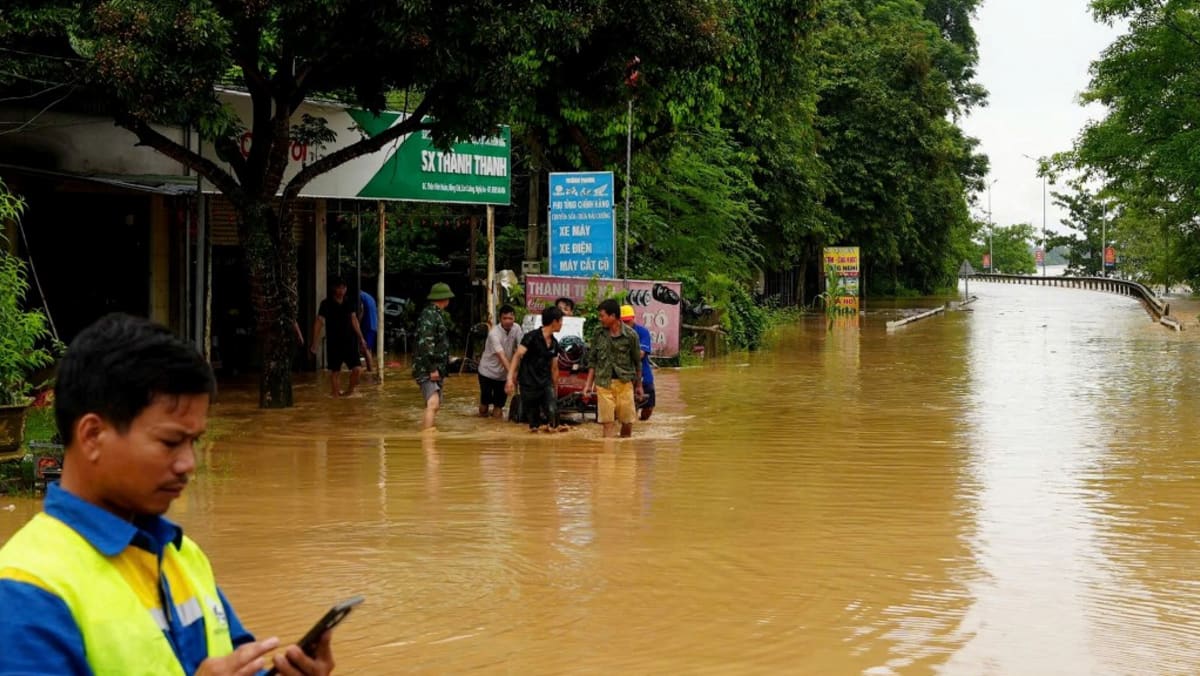Tropical storm Wipha has unleashed a wave of destruction across northern and central Vietnam, transforming from a tropical storm into a tropical depression while still delivering powerful winds and torrential rains. The storm has tragically claimed the lives of at least four individuals, with reports of several others missing as the nation grapples with its aftermath. Areas in Nghe An province have been particularly hard hit, where severe flooding has led to several fatalities and left communities
Did You Know
The average person spends six months of their life waiting for red lights to turn green.
?
AD
isolated from essential resources.
In a proactive response to the impending disaster, authorities evacuated approximately 12,500 residents from high-risk areas ahead of Wipha's landfall. Despite these efforts, the unforgiving nature of the storm has resulted in widespread damage, with countless homes affected and an urgent need for humanitarian assistance. Eyewitness accounts describe families cut off in villages, desperately awaiting rescue from rising waters. The volume of rain has raised serious concerns about further flooding and potential landslides, complicating rescue operations across the affected regions.
The aftermath of storm Wipha has elicited national attention, prompting calls for immediate support and aid for those impacted. As emergency services work to assess and mitigate the destruction, the resilience of Vietnamese communities is being put to the test. Recovery efforts promise to be challenging, but with solidarity and determination, there is hope for rebuilding and restoring lives in the wake of this devastating natural disaster.
Q&A (Auto-generated by AI)
What causes tropical storms like Wipha?
Tropical storms like Wipha form over warm ocean waters when moist air rises, creating low pressure. As the air cools, it condenses into clouds, releasing heat and further lowering pressure. This cycle continues, drawing in more air and moisture, leading to the storm's development. Factors such as sea surface temperature, atmospheric conditions, and wind patterns significantly influence storm intensity and path.
How do floods impact local communities?
Floods can devastate local communities by causing loss of life, displacing families, and damaging infrastructure. In the case of storm Wipha, severe flooding in Nghe An province resulted in deaths and left many cut off from essential services. Floods can also lead to long-term economic challenges, including loss of agricultural productivity and increased health risks due to waterborne diseases.
What measures can prevent flooding in Vietnam?
Preventive measures against flooding in Vietnam include improving drainage systems, building levees, and restoring wetlands. Community education on disaster preparedness is crucial, as is the implementation of early warning systems. Additionally, sustainable land-use planning can help mitigate flood risks, especially in vulnerable areas prone to storms like Wipha.
What is the history of storms in Vietnam?
Vietnam has a long history of tropical storms and typhoons due to its geographical location along the South China Sea. The country experiences an average of 10 to 15 typhoons annually, with devastating impacts on agriculture and infrastructure. Historical storms, such as Typhoon Damrey in 2017, have highlighted the need for improved disaster management and resilience strategies.
How do authorities respond to natural disasters?
Authorities typically respond to natural disasters through emergency management protocols that include evacuation orders, distribution of relief supplies, and coordination with local and international agencies. In the aftermath of storms like Wipha, Vietnamese authorities evacuated thousands from high-risk areas and mobilized rescue operations to assist affected communities.

















